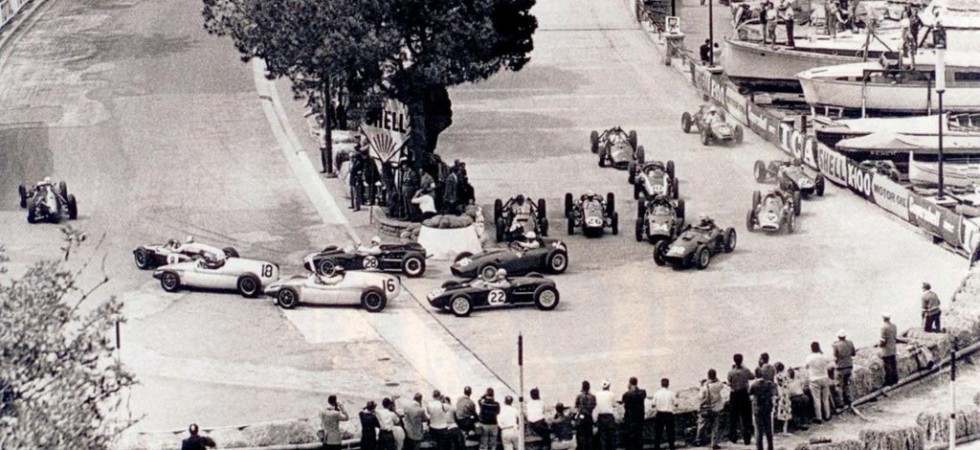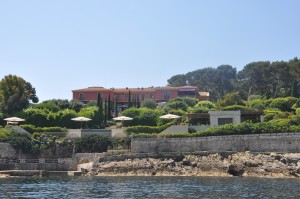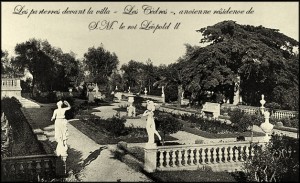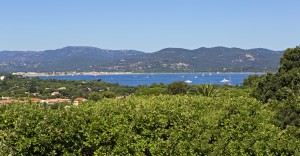Monaco’s F1 Grand Prix is a combination of tradition and driving technique. For over a century, all the greatest drivers have distinguished themselves here an exceptional tale that began in 1929. The history of the Monaco Grand Prix is an interesting one….
To be precise, it was at 1.30 p.m. on April 14th, 1929, that the first red light changed to green in the Principality of Monaco. A first edition held under the honorary presidency of HSH Prince Louis II. After HSH Prince Pierre opened the track on board a Voisin, race director Charles Faroux waved the flag for the sixteen competitors who where to fight it out over 100 laps of a circuit with a local distance of 318 km. It was in fact a certain Williams, in a green Bugatti 35 B, who drove to victory in this first edition of the Monaco Grand Prix, chalking up an average speed of 80.194 km/h…!
A major international event
With the 24 hours at Le Mans and the Indianapolis 500, the Monte-Carlo Rally and Monaco Grand Prix are the two of the four most famous automobile events in the world. The Grand Prix owes its existance to the efforts and determination of a passionate sports fan, Anthony Noghès, former general treasurer of Monaco’s state finances. Using the framework of an old sports association set up in 1890, the “Bicyle Association of Monaco” which had become a years later the “Bicyle and Automobile Sports Association”, he founded the “Automobile Club de Monaco” together with a few friends. After following the example set by other towns such as Santa Monica in the USA, he submitted a project for a race through the streets of the Principality. With the backing of Louis Chiron, then a great driving champion from Monaco, a circuit was quickly mapped out that required very little construction work.
Successive modifications to the track
Over the years, the original circuit was only slightly modified. In 1952, the “Sainte-Dévote” bend was altered, reducing the distance by only 35 metres per lap… The second change, much more significant, was made in 1973. Following construction of the swiming pool, the track was redirected along the port and the stands were erected on the former quay. The circuit now included the famous “Rascasse” bend and was 135 metres longer. The number of laps was then recuced to 78 laps. Three years later, two chicanes were added, the first at “Sainte-Dévote”, the second at the exit from hairpin bend close to the restaurant “La Rascasse”. The track thus gained a further 34 metres. In 1986, a third chicane at the beginning of the Quai des Etats-Unis brought the lap lenght to 3.328 km. The final change was made in 1997. It involved modification of the S-bend around the swimming pool, gicing today’s track lenght of 3.367 km.
The greatest pilots on the podium
Since the event’s creation, there have been only 14 years when the Grand Prix was not held in the Principalty : from 1939 to 1947, the in 1949, 1951, 1953 and 1954. Since 1950, the Monaco event counted for the Drivers’ World Championships. In 1952, the organisers opted for “Sport” vehicles rather than formula 2s retained for the world championships. Throughout the entire history of the Monaco Grand Prix, the greatest pilots and the most renowned and accomplished constructors have seen their names inscribed on the winners’s lists. After the Williams, Louis Chiron, the “race’s local”, and Nino Farina, it was Juan Manuel Fangio – whose name and memory transcend the years – who opened the long listof multi-winners, first in 1950 driving an Alfa Roméo 158, then seven years later, this time on board a Maserati 250 F. Others succeded him : Maurice Trintignant (two titles), Stirling Moss (three victories) and Graham Hill, who the races five times in seven years… The greatest constructors, Mercedes, Ferrari, Maserati, Lotus and Renault, have always signed in present.
A policy dedicated to sportman ship
Closer to our era, Nikki Lauda, Alain Prost, Ayrton Senna, Olivier Panis, David Coulthard, Mika Hakkinen, Montoya and Trulli have all driven their cars to victory in the Principality. Not forgetting Michael Schumacher, seven times world champion, who on board his magical Ferrari, has victoriously crossed the finishing line five times in Monaco. The smallest state in Europe after the Vatican has thus seen its efforts and the imagination of its leaders justly rewarded. The appearance of the Monaco Grand Prix on the international agenda was indeed the result on the policy with the accent on sportsmanship, adopted by Monaco’s sovereigns and the directors of the Automobile Club de Monaco.



